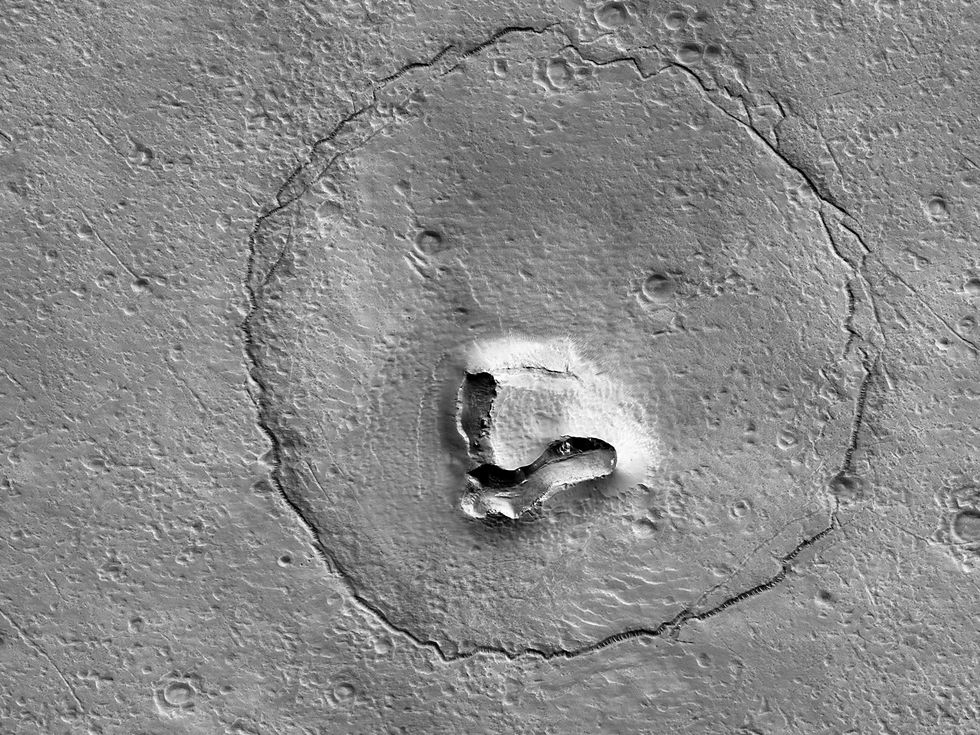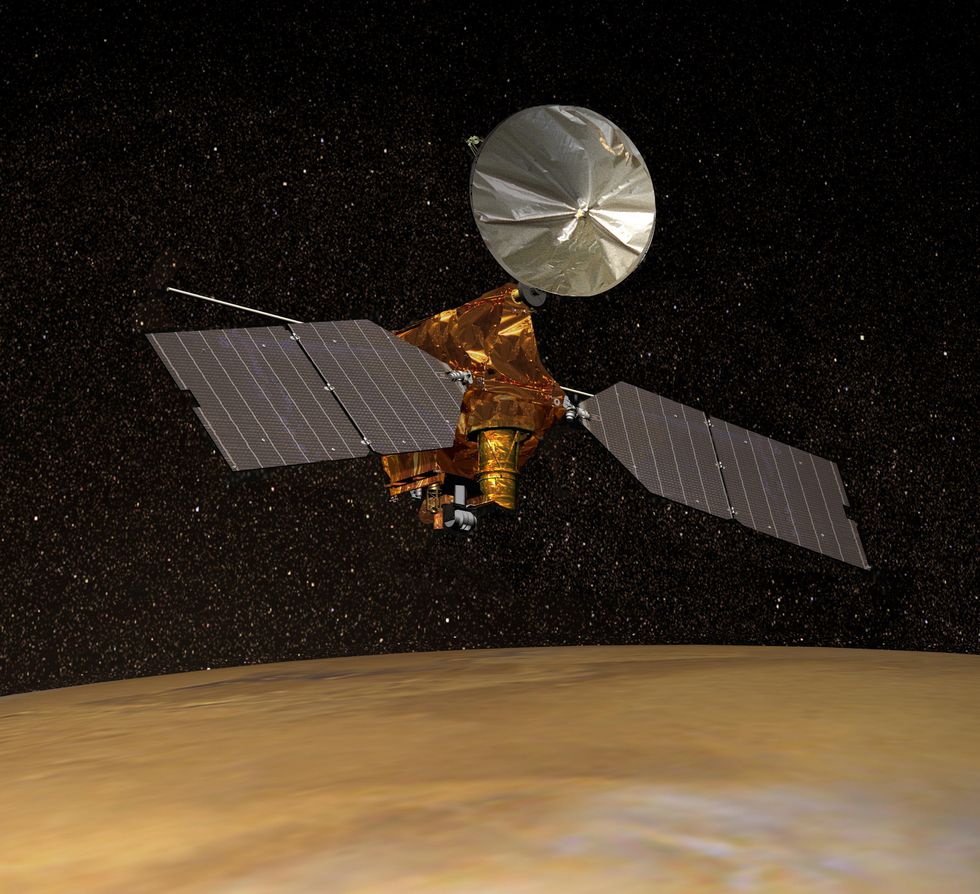Becca Monaghan
Jan 26, 2023
NASA's Future Crewed Mission to Mars Depends on Developing Nuclear Thermal Propulsion
content.jwplatform.com
Nasa scientists have spotted an image on Mars, which they described as looking like a grizzly bear.
The image, taken in December, was captured by the Mars Reconnaissance Orbiter from a height of 251 km.
The spacecraft used its HiRISE (High-Resolution Imaging Science Experiment) camera; the most powerful ever sent to another planet.
The space agency explained: "A Bear on Mars? This feature looks a bit like a bear’s face. What is it really?
"There’s a hill with a V-shaped collapse structure (the nose), two craters (the eyes), and a circular fracture pattern (the head).
"The circular fracture pattern might be due to the settling of a deposit over a buried impact crater.
"Maybe the nose is a volcanic or mud vent and the deposit could be lava or mudflows?"
"Maybe just grin and bear it," they added.
Sign up for our free Indy100 weekly newsletter

Nasa's HiRISE camera takes photos of "vast areas of Martian terrain while being able to see features as small as a kitchen table."
It has photographed hundreds of images of Mars' surface in unprecedented detail.
"The camera operates in visible wavelengths, the same as human eyes, but with a telescopic lens that produces images at resolutions never before seen in planetary exploration missions," Nasa wrote on their site.

"These high-resolution images enable scientists to distinguish 1-meter-size (about 3-foot-size) objects on Mars and to study the morphology (surface structure) in a much more comprehensive manner than ever before."
They added: "These new, high-resolution images are providing unprecedented views of layered materials, gullies, channels, and other science targets, in addition to characterising possible future landing sites."
Credit: SWNS.
Have your say in our news democracy. Click the upvote icon at the top of the page to help raise this article through the indy100 rankings.
Top 100
The Conversation (0)














